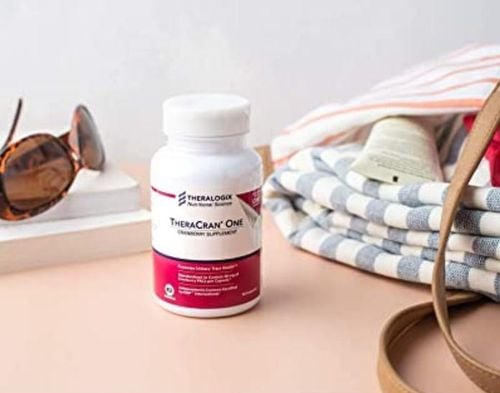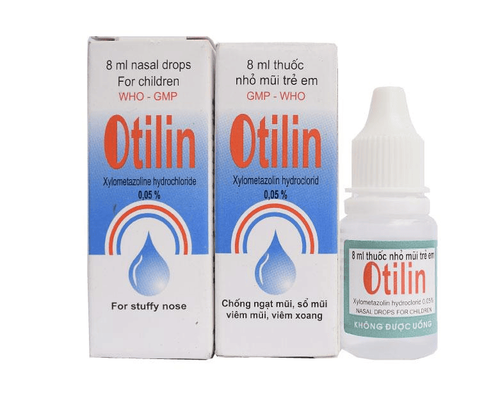This is an automatically translated article.
Lodsan is an antibiotic used mainly in the treatment of bacterial infections. Patients need to make sure to follow the treatment regimen suggested by the doctor to quickly reverse the disease.
1. What is Lodsan?
Lodsan drug belongs to the group of antibiotics used by doctor's prescription, mainly for community-acquired pneumonia, urinary tract infections, skin or soft tissue... Lodsan is manufactured by PT Pertiwi Agung - INDONESIA, prepared in the form of film-coated tablets, box includes a blister x 10 tablets.
In one Lodsan tablet contains the following active ingredients:
Main active ingredient: Levofloxacin (as Levofloxacin hemihydrate) content 500mg. Other excipients: Sodium starch glycolate, corn starch, Hypromellose, Ethylcellulose, Low-substituted hydroxypropyl cellulose, Titandioxide, FD&C yellow 6 alum lake, Magnesium stearate, Talc powder, polyethylene glycol 6000 and castor oil.
2. Uses of the drug Lodsan
Lodsan is often prescribed by doctors to treat infections caused by bacteria susceptible to Levofloxacin, including:
Treatment of community-acquired pneumonia. Treatment of soft tissue and skin infections. Treatment of urinary tract infections is not complicated. Treatment of acute bacterial exacerbations of chronic bronchitis. Treatment of acute sinusitis caused by bacteria. Treatment of chronic prostatitis caused by bacteria. Treatment of uncomplicated urinary tract infections. Treatment of complicated urinary tract infections, including pyelonephritis. Do not use Lodsan for the following subjects without a doctor's prescription, specifically:
Patients who are hypersensitive or allergic to the active ingredient Levofloxacin, other Quinolone antibiotics or any other ingredient which excipients are in the medicine. Lodsan is contraindicated in patients with epilepsy. Lodsan should not be used in people with a history of tendon disorders related to the use of fluoroquinolones. Lodsan should not be used by young children or growing children without a doctor's approval. Relative contraindications Lodsan for pregnant women and mothers who are breastfeeding.
3. Dosage and how to use Lodsan
3.1. Dosage of Lodsan drug as recommended by the doctor The dose of Lodsan to be used will be determined based on the doctor's assessment of the infection that the patient is suffering from:
Lodsan dose for functional adults With normal renal function:
For adults with bacterial infection and with creatinine clearance greater than 50ml/min, the dose of Lodsan will be used as follows:
Treatment of community-acquired pneumonia: Take 500mg Levofloxacin/day, oral day 1-2 times and use within 1-2 weeks. Treatment of skin and soft tissue infections: Take 500mg of Levofloxacin/day, take it 1-2 times a day and use it for 1-2 weeks. Treatment of acute sinusitis caused by bacteria: Take 500mg Levofloxacin / time / day, use a course of 10-14 days. Treatment of acute bacterial exacerbations of chronic bronchitis: Take 500mg Levofloxacin / time / day, use a course of 7-10 days. Lodsan dose for adults with renal impairment:
For adult patients with renal impairment (creatinine clearance less than 50ml/min) the dose of Lodsan will be administered as follows:
Clearance coefficient from 20 to 49ml/min: Oral dose Initially 500mg Levofloxacin within 24 hours, then a maintenance dose of 250mg Levofloxacin for the next 24 hours, taking the drug once for 7-10 days. Clearance from 10 - 19 ml / min: Oral dose of 500 mg Levofloxacin in 24 hours, then a maintenance dose of 250 mg Levofloxacin in the next 48 hours, taking the drug once for 7-10 days. Lodsan dose for special subjects:
Patients with impaired liver function do not need to adjust the dose of Lodsan. Children under 18 years of age should not use Lodsan because there are no data to calculate specific safe and effective doses for children. Even research shows that the use of drugs in the Quinolone group, including Levofloxacin, can cause osteochondrosis or joint disease. The active ingredient Levofloxacin in Lodsan is excreted by the kidneys, so elderly patients with impaired kidney function are often at a higher risk of experiencing dangerous side effects when using this medicine. Therefore, the dose for elderly patients with impaired renal function should be selected carefully, and the function of the body must be monitored during treatment. 3.2. Instructions for proper use of the drug Lodsan Lodsan is in the form of tablets, so the drug will be taken orally with a sufficient amount of filtered water. When taking Lodsan, the patient should swallow the tablet whole, avoiding crushing or chewing it.
According to the doctor's recommendation, patients can take Lodsan with the main meal or at the time between 2 meals. Lodsan should be taken 2 hours before or after the patient takes antacids containing Al, Mg, Sueralfat, multivitamin preparations containing zinc, drugs containing metal ions (eg, iron) or antidiabetic drugs. Street .
3.3. Treatment of Lodsan Overdosage When overdosing on Lodsan, patients may experience symptoms of acute levofloxacin toxicity, including confusion, impaired consciousness, tinnitus, or epileptic seizures. . In case of detecting symptoms of suspected overdose of Levofloxacin, the patient should immediately go to a medical facility for examination and treatment.
Some methods of managing overdose such as hemodialysis, peritoneal dialysis, and continuous ambulatory peritoneal dialysis (CAPD) are practically ineffective in eliminating Levofloxacin from the body. In addition, currently there is no specific antidote for levofloxacin poisoning cases.
If an overdose of Levofloxacin is taken, the patient may also experience gastrointestinal reactions such as mucosal erosion or nausea. At that time, the doctor will prescribe intestinal lavage method and use antacids to protect the stomach lining from corrosion.
4. Possible side effects when using Lodsan
During the treatment of bacterial infections caused by bacteria sensitive to Levofloxacin with Lodsan, patients may experience some unwanted side effects below:
Common side effects: Diarrhea, nausea, pain headache, insomnia, or elevated liver enzymes. Uncommon side effects: Nervousness, dizziness, anxiety, agitation, flatulence, abdominal pain, dyspepsia, constipation, nausea, vaginitis, genital candidiasis, hyperbilirubinemia, rash or itchy. Rare side effects: Arrhythmia, increased/low blood pressure, dry mouth, pseudomembranous colitis, tongue edema, gastritis, muscle weakness, arthralgia, myalgia, Achilles tendonitis, osteomyelitis, dreams abnormalities, seizures, psychosis, depression, anaphylaxis, Quinek's edema, Lyell syndrome or Stevens-Johnson syndrome. If any of the above mentioned side effects occur during treatment with Lodsan, the patient should stop taking the drug and report it to a specialist for treatment. Some side effects can go away on their own after stopping taking the drug, but there are also some symptoms that are easy to leave sequelae if not detected and treated early.
5. Things to note when using Lodsan
5.1. What precautions should be taken while using Lodsan? In order to ensure the safety and effectiveness of the treatment of bacterial infections, patients need to keep in mind and be cautious about the following things during the use of Lodsan, including:
Some possible adverse reactions Irreversible and disabling patients due to Lodsan use, such as peripheral neuropathy, tendon rupture, tendinitis or other dangerous symptoms on the central nervous system. The use of fluoroquinolone antibiotics can cause severe, disabling and irreversible adverse reactions in the patient's body to many different organ systems. Extreme caution should be exercised when using Lodsan in patients with a history of convulsions. Severe and persistent bloody diarrhea is likely to occur during or after treatment with Lodsan. This could be a warning sign of pseudomembranous colitis. Prolonged use of Lodsan may lead to the development of resistant microorganisms. Because Lodsan may cause side effects such as drowsiness, dizziness, tinnitus or visual disturbances, people who drive or perform work related to operating machinery should be cautious when operating machinery. treated with Lodsan. Pregnant women or mothers who are breastfeeding should consult a doctor before using Lodsan to avoid danger to the fetus and newborn. 5.2. Can Lodsan interact with other drugs? Below is a list of drugs with a risk of interactions when combined with Lodsan :
Multivitamins . Antacids. Sucralfar. Metal ions. Theophylline drug. Probenecid. Cimetidine drug.
Please dial HOTLINE for more information or register for an appointment HERE. Download MyVinmec app to make appointments faster and to manage your bookings easily.













